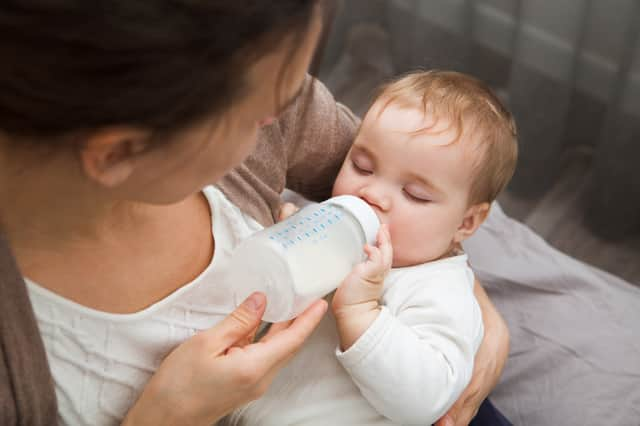Breast milk found to commonly contain toxic chemicals from home furnishings


A new report from the Commons Environmental Audit Committee (EAC) warns about how people are being exposed to toxic chemicals found in home furnishings.
The report stated that mothers’ breast milk has been found to contain a high concentration of toxic chemicals that have even been banned.
What did the report say?
Advertisement
Hide AdAdvertisement
Hide AdThe main purpose of the report was to call on Government to “use the forthcoming Chemicals Strategy to form the basis of a non-toxic environment in the UK”.
The report from the committee explained about how the 1988 Furniture and Furnishings (Fire Safety) Regulations have been under review for 10 years - with no reforms enacted.
During this time, the report states how “some of the most commonly used flame retardants have been classed as substances of very high concern.”
“Inaction has allowed unnecessary and potentially toxic chemicals to continue to enter the public’s homes,” the report explained.
Advertisement
Hide AdAdvertisement
Hide AdMP and chair of the EAC Mary Creagh said, “Most people assume that they aren’t at risk from toxic chemicals, but the reality is different.
“Mums in the UK have some of the world’s highest concentrations of flame retardants in their breast milk, some of which have now been banned.”
Creagh explained how chemical flame retardants are still experiencing widespread use in our furnishings, “from children’s mattresses to sofas.”
“Meanwhile the government is sitting on its hands instead of changing regulations to ensure that the most toxic chemicals are taken out of use,” she added.
Toxic chemicals and public health
Advertisement
Hide AdAdvertisement
Hide AdThe EAC write, “There are a huge number of chemicals used in plastic and food packaging, some of which have been identified as harmful to human health and the environment.”
Included within their written report is a table showcasing sample groups of chemicals of concern to public health, and what their uses are in day to day life.
These chemicals included:
Bisphenols, whose possible health effects include disrupting the reproductive and hormone systems, as well as increasing the risk of cancer. These chemicals are found in products like:
Food can liningsPlasticElectronic toysPaper receipts
Persistent Organic Pollutants, which are flame retardants and surfactants, and whose health effects include cancer risk, reproductive disorders, neuro- behavioural impairment, endocrine disruption, genotoxicity and increased birth defects.
Advertisement
Hide AdAdvertisement
Hide AdThese are actually banned under the Stockholm Convention, but are still widely dispersed in the environment including in recycled products.
Flame retardants, which are classified as carcinogenic and toxic, whose possible health effects include disrupting the reproductive and hormone systems. These chemicals are found in:
FurnitureElectronicsBuilding materials
‘Troubled by the lack of urgency’
The report expressed a concern regarding the Government response to the chemical findings around Grenfell.
“We are troubled by the lack of urgency in response to findings of environmental contamination from chemicals around the Grenfell Tower site,” it read.
Advertisement
Hide AdAdvertisement
Hide Ad“Residents should be reassured that the presence of these chemicals is not harmful to their health and homes.”
The EAC had concerned regarding how residents have reported the emergence of “Grenfell cough” and other health problems which include vomiting, coughing up blood, skin complaints and breathing difficulties.
Proposed solutions
The report warns how it will not be possible to implement the plans of the Government’s 25 Year Environment Plan and the Resources and Waste Strategy “without a rapid transition to a more circular economy for chemicals”.
Therefore, the forthcoming Chemicals Strategy should set out a “clear, ambitious vision for the type of chemical environment we hope to live in.”
Advertisement
Hide AdAdvertisement
Hide AdThe EAC propose a variety of solutions in order to see a change in how toxic chemicals are used in day to day life, such as:
Urging the Government to work with the EU environment plan and REACH to phase out chemicals that are harmful to the environment. The EAC says that this should “include a ban on the use of substances of very high concern”.The EAC ask that the Government establish a UK wide human and wildlife biomonitoring programme in order to better understand chemical exposure and effectsA call for manufacturers to be more transparent about the chemicals used in their packaging to allow consumers to make more informed decisions
The report asks that the UK be brought in line with the rest of the EU and develop a new flammability test standard.
The EAC explained, “The UK and Ireland stand alone in requiring these chemicals in domestic upholstered furniture with a hotly contested debate about whether they reduce fire deaths.”
This article originally appeared on our sister site Edinburgh Evening News